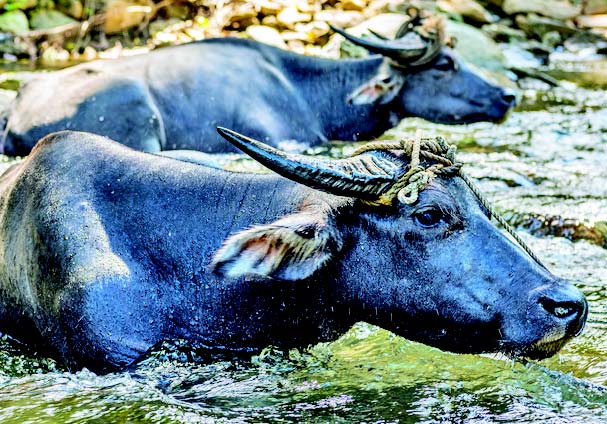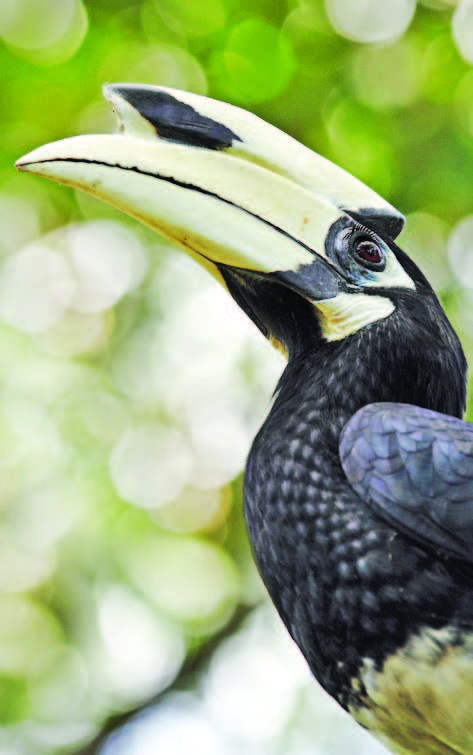Just this year, President Rodrigo Duterte signed a new law to protect threatened plant and animal species, including those endemic to the Philippines.
Republic Act 11038 expands the coverage of the National Integrated Protected Area System Act, adding 94 protected areas to the initial list of 13 backed by legislation. The law is meant to protect species such as the Philippine tamaraw, increasing funding for the protection and conservation of critically endangered species and key biodiversity areas, according to a 2018 article by Delon Porcalla for The Philippine Star.
Below are five of the mammals, birds, and reptiles considered critically endangered and included in the International Union for the Conservation of Nature’s (IUCN) Red List of Threatened Species — critically endangered being the highest risk rating for animal species.
Philippine Eagle
The Philippine eagle (Pithecophaga jefferyi), reportedly one of the world’s largest and heaviest eagles, is endemic to the Philippines. The Philippine eagle was proclaimed the national bird of the Philippines in 1995 by former President Fidel V. Ramos.

Many have called the conservation of the species a lost cause due to the dangers they face of deforestation and poaching, according to a 2018 article by Bong S. Sarmiento published online in Earth Island Journal. This is doubly problematic considering that the existence of the Philippine eagle is an indicator of ecological health, as the species is known to prey on animals which are also crucial to the maintenance of healthy ecosystems, reported Jonathan Mayuga in a 2018 article for Business Mirror.
Tamaraw
The tamaraw, also known as the Mindoro dwarf buffalo (Bubalus mindorensis), is the Philippines’ largest endemic mammal. The water buffalo can be found only in a certain area of the Mount Iglit-Baco National Park in Mindoro, according to a 2018 Xinhua article.

Population for the species began to dwindle in 2011 because of the high demand for its meat and insufficient resources for its conservation, reported Kristine L. Alave in a 2011 article in Philippine Daily Inquirer. While the Department of Environment and Natural Resources revealed an increase in the species’ population just this year, the tamaraw continues to stay on the IUCN’s Red List of Threatened Species.
Philippine Crocodile
There are less than 20 adult Philippine crocodiles (Crocodylus mindorensis) left in the wild, and it is feared that the species’ population will continue to decline despite conservation efforts. A couple of the dangers the Philippine crocodile faces are habitat loss and entanglement in fishing nests.

While the Wildlife Act, or Republic Act No. 9147, protects the Philippine crocodile and carries a penalty of six years in prison or a fine of P100,000 or both for those charged with killing one of the species, Philippine crocodiles are still in high danger of the illegal reptile trade, based on a 2018 report by Erwin Mascarinas for Philippine Daily Inquirer. In January of this year, it was revealed that a number of unique reptiles, including the Philippine crocodile, could be bought on Facebook, according to a 2018 article in SunStar.
Sulu Hornbill
The rarest and most endangered hornbill species in the world is the Sulu hornbill (Anthracoceros montani). According to a 2018 Mongabay article written by Bee Choo Strange, the species, endemic to the Philippines, was discovered in 1880.

Once a thriving population, there are now approximately only 40 of the Sulu hornbill species alive. The first hornbill extinction recorded was in the Philippines, making conservationists determined to save the remaining hornbills in the country. Hornbill species are most threatened by habitat loss due to deforestation and mining, based on a 2018 report by Rouchelle Dinglasan for GMA News Online.
Panay Monitor Lizard
The Panay monitor lizard (Varanus mabitang), also known as the bayawak, is endemic to Panay Island and is known to be herbivorous. Like the other species featured on this list, the Panay monitor lizard is most threatened by deforestation.

The Panay monitor lizards depend on fruit trees for survival. Without these, the species risks starvation. Aside from suffering from habitat loss, the Panay monitor lizards are also hunted for food by locals, according to Our Endangered World.
This appeared in Animal Scene magazine’s November 2018 issue.





